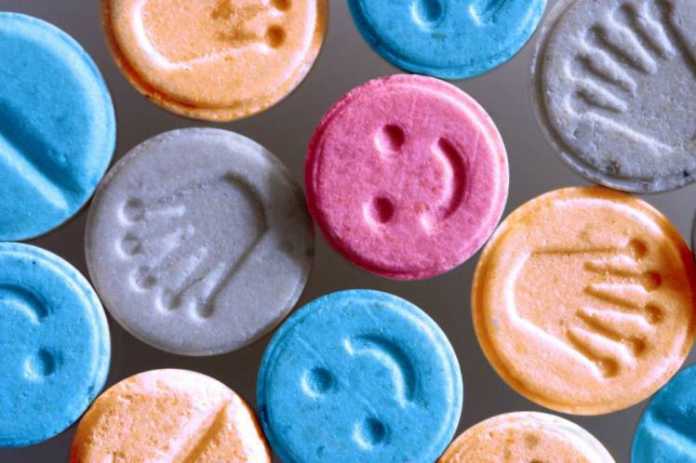Is your MDMA pure?
MDMA (4-Methylenedioxy-methamphetamine) is a synthetic psychoactive substance, also known as molly, ecstasy, or E. Its effects are both stimulating and hallucinogenic, producing feelings of euphoria and empathy for others. Psychable is an online community committed to providing free resources on all things related to psychedelics, offers a number of free resources related to MDMA.
MDMA has been studied in the psychotherapeutic environment for decades, but it has also been a popular underground recreational drug. It was banned for personal use in 1985 after American politics became more focused on waging a ‘War on Drugs.’
Recreational use of MDMA continued nonetheless and remains common among members of nightlife scenes, festival attendees, and other communities. Unfortunately, the purity of illegally obtained MDMA can not be assumed: it is one of the most likely drugs to be adulterated with a number of different substances that are frequently unknown to the consumer.
Here is what everyone should know about MDMA adulteration, the risks of possible contaminants, and how to tell if a sample is pure.

Is MDMA the same as molly or ecstasy?
Yes and no. Molly and ecstasy are casual terms that assume synonymity with MDMA but are used by recreational consumers and not the scientific community.
“Molly, ecstasy, and MDMA sold illegally are likely to be contaminated with other substances that could potentially inflict harm depending on the circumstances,” explains Jemie Sae Koo Psychable CEO and Co-Founder.
“While some are shown to be pure, many samples tested have revealed no MDMA content whatsoever in these drugs. Consumers are often unaware of the actual content of MDMA they acquire outside of a clinical environment.”
Common MDMA contaminants
Contamination is difficult to avoid given the heavy regulations on the drug, which arguably worsen the problem of adulteration as MDMA is produced clandestinely in homemade labs with no accountability for quality or purity.
Generally speaking, non-clinical MDMA samples have been known to contain cannabinoids, opioids, depressants, tranquilizers, stimulants, dissociatives, psychedelics, general non-psychoactive ingredients as well as unidentified substances. In a 2014 survey, almost half of the samples contained no MDMA whatsoever.
Some of the most common contaminants found in samples of MDMA sold underground include stimulants like amphetamine, methamphetamine, caffeine, cocaine, and methylene-dioxyamphetamine (also known as bath salts). N-methoxybenzyl, N-Ethylpentylone, PMA (paramethoxyamphetamine) are a few other dangerous contaminants that may mimic the expected effects of MDMA with increased energy and confidence.
Underground MDMA samples have also revealed traces of anesthetics. Dextromethorphan (DXM) is common; it is an ingredient in over-the-counter cough medicines. Ketamine, a psychoactive substance that can cause feelings of dissociation, has also been found.
Risks of contaminated MDMA or combination with other substances
It is rare to see cases of overdose or extreme toxicity when MDMA is the sole substance consumed, however, most incidences of illness related to MDMA (not related to existing health issues or environmental factors) involve contaminants or polydrug use. Whether ingestion of other substances is inadvertent or intentional, there are serious potential risks associated with mixing MDMA with other drugs.
MDMA should not be taken with antidepressants or other drugs that affect the output or reuptake of the neurotransmitter serotonin due to risks of neurotoxicity and damage to the receptors.
MDMA increases blood pressure and heart rate, which can be dangerous when combined with other stimulant drugs. Additional stimulants may also increase the likelihood of negative effects such as anxiety. People with high blood pressure or heart conditions are particularly at risk.
MDMA also causes an increase in body temperature. This can cause complications from either dehydration or excessive fluid intake, and both can be dangerous if either condition is severe. Consumption of alcohol in combination with MDMA can worsen dehydration as it causes more frequent urination. Excess water intake can cause low blood sodium levels, causing headaches, nausea, and poor balance (seizures are a rare but serious possibility).
When MDMA is contaminated with substances that cause impaired judgment or temporary disconnectedness from reality (such as tranquilizers, hallucinogens, and ketamine), the consumer can be less aware of the severity of dangerous symptoms or become paranoid about the legal ramifications of illicit use, making it less likely that they will seek help immediately.
Most conditions related to MDMA contamination are treatable, but it is crucial for the consumer and their companions to remain aware of any dangerous symptoms and seek emergency medical attention as soon as possible. If someone shows signs of dehydration, confusion, impaired balance, anxiety, or a rapid heart rate, call 911.
How to tell if MDMA is pure
“It’s not enough to take someone’s word for it: the only way to be sure of MDMA’s purity is to test it,” explains Matt Zemon, Psychable Chief Strategy Officer and Co-Founder.
There are home test kits that use liquid chemical reagents to help determine the contents of an MDMA sample. These kits can be ordered online, but not many consumers opt to use them for several reasons. First, there is the additional cost and effort required. Second, home test kits are somewhat notorious for inaccuracy, which might cause the consumer to question the point of testing in the first place.
Then, there is the reality that test kits are considered drug paraphernalia and are therefore potentially incriminating in certain geographical areas. This is unfortunate, as there is growing evidence that harm reduction tools such as home test kits serve to either dissuade a consumer from taking a drug or at least influence a decision to take a smaller dose when contaminants are discovered in a sample.
The best and most accurate form of testing is chromatography/mass spectrometry (GC/MS). The Erowid Center offers this service anonymously, publishing the results of a submitted sample once testing is complete. There is currently a $100 fee for testing molly and ecstasy samples, however, it is a worthwhile investment in the name of safety.

Harm reduction
Strict drug laws and the police enforcement that comes along with them have proven to be ineffective methods of deterring illegal drug use or reducing the number of emergency medical incidents associated with contaminated MDMA. In contrast, harm reduction efforts have demonstrated promise in this area.
Some harm reduction efforts have included on-site drug sample testing and healthcare professionals available to provide education at public events, as well as access to clean water, proper ventilation or designated relaxation areas, and trained volunteers and staff members.
Outside of the public event sphere, it has been argued that decriminalization of certain drugs may help reduce the harm inflicted by dangerous contaminants by eliminating some fear of repercussions from law enforcement, allowing those in possession to instead pay fines and receive education or substance abuse support services.
Closing thoughts
If a person has any question as to the purity of an MDMA sample, it is better to be safe than sorry. The adulteration of MDMA is remarkably common and can have dangerous effects. The only way to determine the actual contents of MDMA obtained outside of a clinical trial setting is to test it. It is never a good idea to purchase drugs illegally from anyone, regardless of how pure they claim a dose to be.



















